
AtomicDensityMatrix
AtomicDensityMatrix is a package for Mathematica 6 and later that facilitates analytic and numerical density-matrix calculations in atomic and related systems. It is intended to be both general and user-friendly, and to be useful to the working physicist as well as to students.
AtomicDensityMatrix is open source software, licensed under the GPLv3.
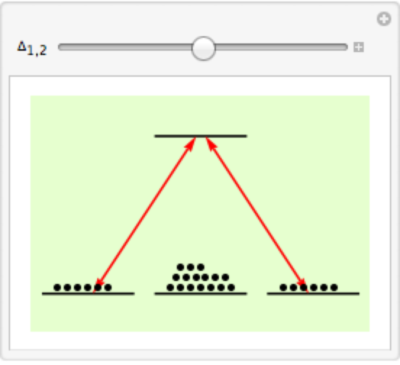
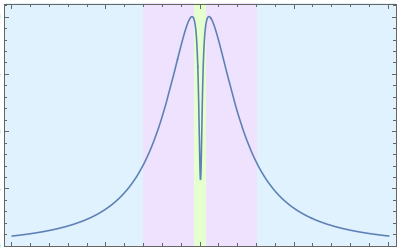
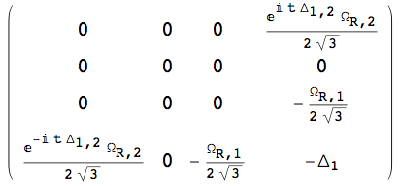
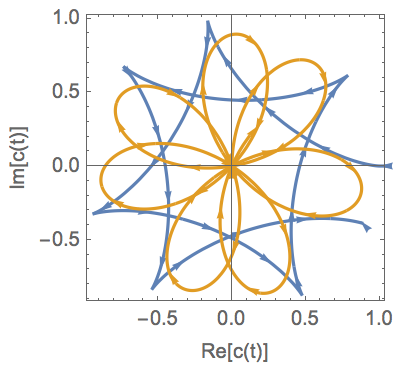
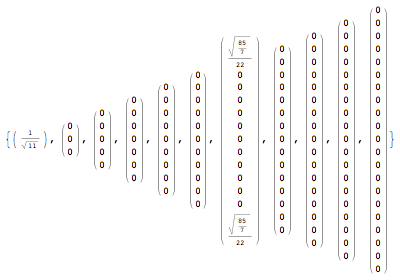
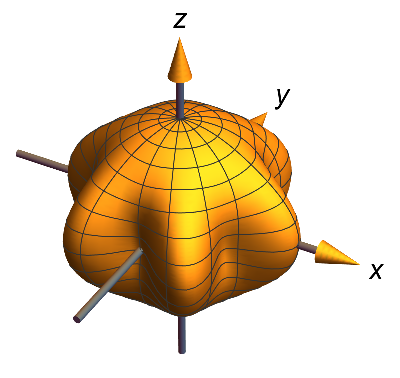
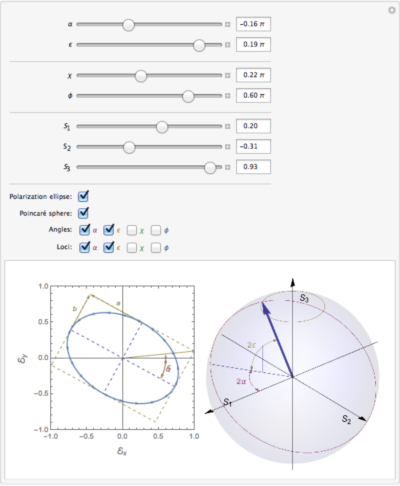

News:
The package has been updated for compatibility with Mathematica 13.2. Please send bug reports to simon@rochesterscientific.com.
Features:
- Supports systems with an arbitrary number of states, automatically generating Zeeman and hyperfine substructure. Also supports calculations for model systems that neglect angular momentum
- Automatic generation of Hamiltonians including the effects of arbitrary static or dynamic electric, magnetic, and optical fields
- Routines for automatic application of the rotating-wave approximation
- Automatic generation of terms describing relaxation effects, including spontaneous decay
- Formulates and solves density matrix evolution equations, either analytically or numerically, as a function of time or in the steady state
- Routines implementing the matrix-continued fraction method for efficient numerical computation of periodic solutions for the case of modulated fields
- Supports generation and simultaneous solution of coupled density matrices describing different velocity classes and physical regions in the system
- Finds the effect of atomic polarization on light polarization, using various light polarization parameterization schemes
- Performs irreducible tensor decomposition of the density matrix
- General implementation of irreducible tensor algebra
- Performs arbitrary rotations of operators and irreducible tensors
- Automatic generation of level diagrams showing level structure, electromagnetic-field induced coupling, and atomic sublevel populations from the density matrix
- Plots angular-momentum probability surfaces: a 3D geometrical representation of atomic polarization
- An associated graphics package aids the generation of plots and animations for visualization of the physical processes
- A growing collection of basic and advanced examples, showing the application of the package to real atomic physics problems
- User extensible
Take a look at the online documentation for examples of what the package can do.
Download:
There are two versions of the package for download, which differ only in the formatting of the documentation.- Download the v13.2 zip for the latest version of Mathematica, version 13.2.
- Otherwise, download the v6+ zip, which is optimized for Mathematica versions 6-9, but should work in all versions.
- Current version:
- Previous versions:
- ADM_20.04.27.zip (release notes)
- ADM_18.09.08.zip (release notes)
- ADM_17.08.24.zip (release notes)
- ADM_17.06.12.zip (see release notes if upgrading to this version)
- ADM_17.05.31.zip (release notes)
- ADM_17.02.12.zip (see release notes if upgrading to this version)
- ADM_15.08.27.zip (release notes)
- ADM_15.04.24.zip (release notes)
- ADM_14.02.28.zip (release notes)
- ADM_13.07.19.zip (release notes)
Installation:
First download ADM_yy.mm.dd.zip.
Installing a Mathematica package consists entirely of placing the package files in a location where Mathematica can find them. You can do this using one of the following two methods:
- Using the "File > Install" menu item (Mathematica version 8 and up):
- Start Mathematica.
- Select the menu item "File > Install".
- In the dialog box, for "Type of Item to Install" choose "Application" (not "Package"; ADM is technically a Mathematica application, because it consists of a collection of packages).
- For "Source" choose "From File..."
- When the file selector appears, choose the zip file that you have downloaded, and select "Open".
- Leave the "Install Name" as it's given, and click "OK".
- Mathematica will extract the contents of the zip file and copy them to the correct install location.
- Manually (all versions):
- Locate your Mathematica base directory (for installation for all users) or user base directory (for
installation for the current user only). You can find these directories by evaluating
$BaseDirectoryor$UserBaseDirectoryin Mathematica. In Mathematica 7 or later, you can open the directory in a file browser by evaluating
orSystemOpen[$BaseDirectory]
(Note that under Windows or Mac OS these directories may be hidden in the file system by default.)SystemOpen[$UserBaseDirectory] - Unzip the contents of the downloaded zip archive into the "Applications" subdirectory of the base directory.
- The package files should now be in the directory
where[BaseDirectory]/Applications/AtomicDensityMatrix[BaseDirectory]is the directory you chose in the previous step.
To load and test the package in Mathematica, evaluate
<<AtomicDensityMatrix`and then
$ADMVersionto see the package version number,
AMPSPlot[DiagonalMatrix[{1, 0, 1}]]to see a simple angular-momentum-probability surface, and
LevelDiagram[ZeemanSystem[1]]to plot the level diagram for a J=1 atomic system. There are many other examples in the
documentation.
Documentation:
The package documentation is growing, but far from complete. It is available in the Mathematica Documentation Center when the package is installed. (You may have to restart Mathematica immediately after installation to see the AtomicDensityMatrix documentation appear in the Documentation Center.)
To view the documentation, select "Help > Documentation Center", and click "Add-Ons and Packages" at the bottom of the page (for version 6, "Installed Add-Ons" on the bottom right). You will reach a page of links to the documentation for installed packages. Alternatively, you can just enter "adm" in the Documentation Center search bar—one of the first few results should be for the ADM package guide page.
The documentation is also available online in html format.
Laser Guide Stars:
The LGSBloch package is an extension to the Atomic Density Matrix package that contains routines for calculating the return flux from optically excited alkali atoms, specifically designed for Na atoms in the mesosphere.
The LGSBloch package requires Mathematica 7 or later.
To install, first install the ADM package. Then download LGSBloch_yy.mm.dd.zip below, and follow the same procedure as with the ADM package, so that the directory "LGSBloch" ends up in the "Applications" directory alongside the "AtomicDensityMatrix" directory.
Some basic documentation is available in the Mathematica Documentation Center after the package is installed. Press F1 to get the Documentation Center, and enter "LGSBloch" in the search box.
- Current version:
- LGSBloch_17.09.14.zip (Fixed to work with latest version of the ADM package. Also adds tutorials to the Mathematica documentation center.)
- Previous versions:
- LGSBloch_16.11.22.zip (Added option to view fluorescence at arbitrary angle.)
- LGSBloch_16.07.27.zip (Fixes to velocity-group selection routines that will improve accuracy. Removed dependence on deprecated VectorAnalysis package.)
- LGSBloch_15.04.27.zip (Changes to save function of StepPulseFlux.)
- LGSBloch_15.04.24.zip (Updated to work with latest version of ADM package, and separated LGSBlochUtilities into another package.)
- LGSBloch_12.06.25.zip (Added SimpleLGSBlochTest.nb file, and updated installation instructions.)
- LGSBloch_12.06.21.zip (Update to work with latest version of ADM package. Also, a bug with the handling of atomic recoil was fixed, which may cause small changes to return flux results. Other assorted improvements.)
Movies:
Release notes:
- v23.04.11
- Added additional atomic data.
- Now allow
StateLabelQ,StatePosition, etc, to match state labels with patterns. Fluorescencenow takes a required transition specificiation argument.FluorescenceTensornow gives result in spherical rather than Cartesian basis.- Implemented
Subspaceoption forLiouvilleEquation. - Now allow
TransitRepopulationandOpticalRepopulationto be applied to experimental systems. - Now allow rule and boolean transition specifications to be combined in
TransitionEvaluate. - Now allow
AllandNoneas transition specifications. SDampingis now included inRepopulationfunction.- Added
ReducedRabiFrequency,HyperfineTypeSystem,AtomicConfiguration,AtomicTerm,TermSymbol,ValenceElectron,CoreSymbol,SpinMultiplicity,LSymbol,PrincipalQuantumNumber,ElectronL,ElectronEquivalency,OpticalBroadening,AtomicSystem,PerturbativeLinearSolve,TensorTrace,ProjectionProbability,RepresentationTransform,BroadLineApproximation,TensorRecompose,TensorMultiply,TransformTensor,TensorOperatorQ,SmartThread,AccumulateMapfunctions. - Changed
E1Hamiltonianto always use first nonzero component of the electric field forToysystems. - Expanded support for
Hyperfinesystems. - Generalized
Decompositionto apply to vector operators. - Added option to display lists in
TableFormtoTensorForm. - Recomposition of a tensor decomposition now allowed into a space with higher than the minimum required J.
- Extended
TensorType,TensorForm,TensorMultiply, etc. to work with additional tensor structures. - Extensive refactoring and bugfixes.
- Updated and expanded documentation.
- v20.04.27
- Refactored and updated
MatrixRSolve. Code usingMatrixRSolvewill need to be updated to use new syntax. - Allowed specification of
PolarizationVectorandPropagationVectorin spherical basis. - Updated and added documentation pages.
- Added
AllowedCouplingsoption forLevelDiagram. - Added
DMSubstitute,Submatrix,TransitionEvaluate,TransitionPosition,PopulatedDM,FluorescenceTensorfunctions. - Added
Subspaceoption forDensityMatrix. - Added new syntax for
AllowedCouplings,AllowedElements, andNeglectedElements. - Fixed
DiagonalMarixQfor Mathematica 12. - Added
NeglectedCouplingsoption forWignerEckart.
- Refactored and updated
- v18.09.08
- Updated and added new documentation pages
- Made optimizations and bug fixes.
- Added
TensorType,TensorTypeQ,TensorDepthfunctions. - Renamed
MapOnComponentsfunction asComponentMap. - Added
AllowedCouplingsandNeglectedCouplingsoptions forHamiltonian. - Added
AllowedElementsandNeglectedElementsoptions forDensityMatrix. - Added additional atomic states and data for
AtomicData. - Standardized behavior of
WignerEckartforToysystems to match angular-momentum systems. - Changed
HamiltonianforToysystems to take the magnitude of the specified electric field if there is more than one Cartesian component. - Removed
RotatingWaveTransformfunction; this functionality can be obtained withRotatingWaveApproximationusing the optionMethod -> "KeepFastTerms". - Refactored and generalized
MatrixMultiplyfunction, and added option"MultiplyLevel". - Renamed
ContractOneByOnesoption forMatrixMultiplyasScalarizeOneByOnes. - Added preliminary support for
FineandHyperfineatomic system types. - Expanded support for the polarization-moment basis for the density matrix.
- Added input checking and error messages for some functions.
- Defined
WedgeandVeeproducts as top and bottom levelMatrixMultiplyoperations, respectively.
- v17.08.24
- Added
LandSoperators. Hamiltoniannow supports M1 transitions between fine-structure states.- New
RestrictCouplingoption forHamiltonian. - Optimized
WignerEckartfunction for large systems. - Expanded functionality of
Recompositionfunction. - New documentation pages for symbols.
- Added
- v17.06.12
- Added pressure broadening parameter to
LinearAbsorptionfunction and changed argument order. Notebooks that useLinearAbsorptionwill need to be modified accordingly. - Updated "Linear Absorption Fitting" tutorial and added
LinearAbsorptionsymbol page.
- Added pressure broadening parameter to
- v17.05.31
- Improvements to
LevelDiagram. - Code refactoring.
- Allowed supplying an atomic system to
ReducedME. - Symbol documentation pages for
LevelDiagram,AMPSPlot,ToCartesian. - Bugfix for
CartesianQ. - Generalized
MatrixMultiply. - Removed
MapOnParametersandReplaceMatrixElementfunctions. - Improved
EnergiesandTransitionFrequenciesfunctions. - Added unit tests.
- Updated rotations tutorial.
- Removed
SpontaneousEmissionoperator. - Set
HyperfineShiftto zero for Toy and Zeeman systems. - Fixed
StateLabelso that undefined symbols can be used as labels. - Added Na 3D_3/2 state and Na branching ratios to
AtomicData. - Added "Nonlinear Magneto-Optical Rotation in a Radio-Frequency field" tutorial.
- Changed default style options for
Arrow3D. - Bugfix for
TextOnTopfunction.
- Improvements to
- v17.02.12
- Updated for compatibility with
Mathematica11. - Renamed
RegiontoExperimentalRegion. User notebooks that useRegionwill need to be updated. - Extended
StateLabelQandStateMatchQfunctions, removed deprecated syntax forStatePositionandStateMatchQ, addedStateEvaluatefunction. - Rewrote and improved
LevelDiagramfunction. - Added
Fluorescencefunction. - Fixed
FluorescenceOperatorfor toy systems. - Set
BranchingRatioto zero for same-parity states. - Added symbol documentation page for
LevelDiagram. - Renamed
GetLinetoGetLines. - Other minor fixes and improvements.
- Updated for compatibility with
- v15.08.27
- Moved
Arrow3DandPlotAndFitpackages into the AtomicDensityMatrix application. These packages no longer have to be loaded separately. The Graphics and DataAnalysis folders have been removed from the ADM application. When upgrading to this version, it is best to remove the old Graphics and DataAnalysis folders from the installation directory ($[User]BaseDirectory/Applications), to avoid accidentally loading old versions of these packages. - Speed improvements in
WignerEckart,Hamiltonian, andOpticalRepopulation. - Updates to
Arrow3Dfor Mathematica 10. Tweaked default graphics options forAxes3DandAMPSPlot. - Fixed options handling in
PlotAndFitfor Mathematica 10. - Updated documentation for compatibility with Mathematica 10 graphics.
- Added "Magneto-Optical Rotation in an Alkali Atom" tutorial.
- Moved
- v15.04.24
- Added GPL license info to source files.
- Removed dummy AtomicPhysics` package.
- For compatibility with Mathematica 10, renamed
VoidasVoidRegion. User notebooks that use theVoidcommand will need to be changed accordingly. - Adopted WWBCommon package for cross-version-compatible documentation.
- Higher-res banner and logo images.
- Speed improvements in
FixTicksandAlignedGraphicsGrid. - Reorganized and improved unit tests.
- v14.02.28
- Fixed behavior of
BranchingRatiofor setting branching ratios for inverse decays to zero. - Modified
OpticalRepopulationto give more reasonable result when BranchingRatios are not specified. - Added rule to
MatrixMultiplyto allow multiplying a scalar operator by a (Cartesian) vector operator. - Changed possible values for
Interactionoption ofHamiltonianto the strings"Internal","ElectricDipole","MagneticDipole", and"Polarizability" - Updated (and renamed) the "Electromagnetically Induced Transparency and Atomic Polarization" example.
- Speed optimizations.
- Dummy position variables
Xx,Yy, andZzare defined only if theVectorAnalysis`package has not been loaded. If usingVectorAnalysis`package, load it first to avoid name conflict warnings. - Modified
OpticalFieldto produce simpler expressions for arbitrary polarization and propagation vectors. - Added and updated symbol documentation pages.
- Fixed behavior of
- v13.07.19
- Updated for compatibility with Mathematica 9:
- In Mathematica 9, the functionality of
PhysicalConstants`andUnits`has been completely redesigned, and merged with the kernel. However, I don't think loading these packages causes any conflict with built-in functionality, so for backwards compatibility I'm going to continue loading these packages (and suppress the obsolete package warning). Please let me know if you encounter any conflicts. - The functionality of the
VectorAnalysis`package has been redesigned and incorporated into the kernel. There was very little use of it in the ADM package, so I was able to remove the dependency on theVectorAnalysis`package altogether. - There is a new
TensorProductfunction in Mathematica 9, so the ADMTensorProductfunction has been renamedSphericalTensorProduct - Renamed
LabelasStateLabel; the optionLabelforDensityMatrixhas been renamedDMLabel. User notebooks that use theLabelcommand will need to be changed correspondingly. - Fixed problems stemming from new (fixed)
ComplexExpandbehavior. - Native documentation was restyled in version 9, producing some ugly layout problems in the ADM documentation. Cross-version documentation has now been implemented using the method described here.
- In Mathematica 9, the functionality of
- Updated documentation.
- Fixed a bug blocking the package from showing up in the "Add-ons" section of the Documentation Center.
- Fixed web links in the ADM documentation, making them point to the online version of the documentation.
- Made functions for obtaining atomic parameters automatically thread over atomic systems.
- Speed optimizations.
- Changed optical field parameterization specifications to strings.
- Updated for compatibility with Mathematica 9:
- v13.07.07
- Added "Nonlinear Magneto-optical Rotation with Frequency-modulated Light" example.
- Updated "EIT and Atomic Polarization", "Breit-Rabi", "Rotating-wave Approximation", and other assorted tutorials.
- Added symbol pages for
RotatingWaveApproximationandF. - Modified
DropFastTerms(andRotatingWaveApproximation) so that sums of two different optical frequencies are not dropped. Also extended to allow some more complicated expressions as frequency arguments. - Extended
StatePosition,SelectStates, and related functions to allow specification of the selection criteriaLabel ==lab as just lab. - Extended
RotatingWaveApproximation,RotatingWaveTransformandRotatingWaveTransformMatrixto automatically generate the RWA transform matrix given a list of optical frequencies and the associated levels that they couple. Also allow the possibility to specify the optical detuning parameters along with the optical frequencies. - Defined new function
ReplaceMatrixElementthat applies replacement rules to particular matrix elements in an operator selected according to their correspondingAtomicStateparameters. - Defined new function
StateMatchQ
- v13.06.09
- Corrected the units for quantities in AtomicData by changing
Hertzto1/Second(all quantities are in omega units, rad/sec, but were incorrectly labelled as being Hertz). If your application depends on the AtomicData package, it may require modification. - Extended
RotatingWaveTransformMatrixto allow manual specification of level shifts - Changed
ToContravariantandToCovariantto useDualrather thanGeneralizedConjugateTransposewhen converting between co- and contravariant quantities in order to correctly handle complex vectors - Included
SphericalPhaseparameterization inOpticalField - Modified
BranchingRatioso that it returns zero if it can tell that the reverse branching ratio is nonzero. - Fixed links in documentation.
- Updated documentation.
- Updated installation instructions
- Corrected the units for quantities in AtomicData by changing
- v12.08.15
- Added parities for alkali states to
AtomicData - Added
ParityOffsetoption toLevelDiagram - Updated and added usage messages.
- Added parities for alkali states to
- v12.06.21
- Documented the Voigt profile in the "Linear Absorption Fitting" example
- Modified
SublevelMultiplicityso that it returns(2F+1)whenFis defined (suggested by Guobin Liu) - Modified
DopplerWidthto work if lower and upper states are given in either order (suggested by Guobin Liu) WignerDis defined as a system function in Mathematica 8. Therefore the ADM version ofWignerDhas been renamedADMWignerD, and the built-inWignerDhas been overloaded so that it callsADMWignerDwhen given arguments that match theADMWignerDformat.- Fixed linear absorption for Toy systems
SelectStatesnow allows boolean operators in the selection criteria- Speed enhancements
- Split more functions into subpackages
- Removed outer matrix in return value of
PolarizationMatriceswith numerical argument LevelDiagramimprovements- Assorted documentation improvements
- v10.07.17
- Package now loads with
<<AtomicDensityMatrix`rather than<<AtomicPhysics`. A dummyAtomicPhysicspackage that calls theAtomicDensityMatrixpackage is provided for backwards compatibility. - Updated documentation
- Package now loads with
- v10.07.09
- Standardized
WignerRotatefunction - Standardized
AMPSPlotfor polarization-moment expansions - Added "Quantum-mechanical rotations" tutorial
- Updated documentation
- Standardized
- v10.06.28
- Added options to
Ketfunction - Updated some tutorials
- Split
LevelDiagramand perturbative solve functions into subpackages - Fixed bug in
LevelDiagramfor Mathematica 6.0 and made speed improvements
- Added options to
- v10.04.28
- Speed improvements in
SteadyStatePerturbativeSolve,OpticalRepopulation
- Speed improvements in
- v10.04.20
- Modified package context structure
- Speed optimizations
- Migrated development to Wolfram Workbench
- Added
DopplerWidthandMostProbableSpeedfunctions - Added "Linear Absorption Fitting" example
- Fixed
Componentfunction for tensor decomposition matrix input - Combined
DMElementPatternandDMElementPartPatternfunctions
- v09.12.08
- Corrected sign error in optical-field azimuthal angle
- Flipped rotating wave transform from active to passive
- Changed
UnitaryTransformationtoEffectiveHamiltonian - Changed
DMRotatingtoDMFromRotatingDM - Included
PlotAndFitpackage in distribution
- v09.09.07
- Added potassium to
AtomicData - Added
AtomicTransitionfunction toAtomicDatapackage
- Added potassium to
- v09.08.07
- Added
ExcitedStatesfunction - Added
LinearAbsorptionfunction - Improved
LevelDiagramfunction - Improved
SphericalTensorQfunction - Extended
SublevelMultiplicityfunction - Change in internals of
WignerEckartfunction - Fixed bug in
RotatingWaveTransform
- Added
- v09.06.09
- Internal change in
ExprToReIm - Fixed bug in
DMElementPattern - Fixed bug in
FluorescenceOperatorfor angle-integrated case
- Internal change in
- v08.12.09
- Improved
LevelDiagramfunction - Renamed
FluorescenceOperatorasOpticalRepopulationOperator, added newFluorescenceOperatorfunction that calculates fluorescence into a solid angle - Wrote usage messages for some symbols.
- Updated values in
AtomicDataand added Na
- Improved
- v08.10.30
- Improved
TensorForm,Component,PolarizationMoments,LevelDiagramfunctions - Added
PolarizationMomentsrepresentation toOpticalRepopulationfunction - Set up
LiouvilleEquationfunction to produce Bloch equations in terms of polarization moments - Extended
ToCartesianfunction to apply to operators and arbitrary rank spherical tensors - Added "EIT and Atomic Polarization" example
- Improved
- v08.10.23
- Worked on
LevelDiagramfunction - Separated out
AtomicDensityMatrix`Common`package - Changed behavior of
Fparameter: it now returnsJifFis not defined - Changed labeling of density matrix elements in Toy systems: labels are no longer enclosed in lists
- Generalized tensor operations to include imaginary/nonhermitian tensors
- Improved
TensorFormfunction - Updated "MatrixNotation", "Matrix Multiplication" tutorials
- Worked on
- v08.10.07
- Fixed bug in
Recompositionfunction - Improved
LevelDiagramfunction - Updated "Angular-momentum Probability surfaces" example
- Improved "Collapse and Revival Quantum Beats" example
- Fixed bug in
- v08.09.22
- Expanded "Two-level system", and "NMOR" examples
- Updated "Breit-Rabi Diagram", "Collapse and Revival", "Three-level System", "Angular-momentum Probability Surfaces" examples
- Improved
LevelDiagram,TransitRepopulation,DensityMatrix,DMVariables,Recompositionfunctions - Changed polarization moment expansion coefficients to contravariant to match Varshalovich
- Fixed bug in
Componentfunction - Added
CovariantDecompositionQ,ContravariantDecompositionQ,CovariantDecompositionMatrixQ,ContravariantDecompositionMatrixQ,TensorFormfunctions - Added link to source code in documentation
- v08.07.07
- Added "The AC Stark Effect" example
- Added "The Wigner-Eckart Theorem", "Constructing the Hamiltonian", "The Rotating-wave Approximation" tutorials
- Improved
LevelDiagramfunction
- v08.06.29
- Got documentation working in 6.0.3
- Revamped Guide page
- Added "Displaying the Density Matrix" tutorial
- Added "Collapse and Revival Quantum Beats" example
- Added symbol reference pages for
DensityMatrix,DMVariables,Ket,AtomicState,L,S - Added
$ADMVersionsymbol.
- v08.05.26
- Streamlined internals of
OpticalField - Improved
Regioninput toHamiltonian - Eliminated
FractionalDensityRegion parameter - Included case of multiple ground states in
TransitRepopulation - Added "Isolating the Hexadecapole Moment" example
- Added
GFactorparameter toAtomicState - Added
LevelDiagramfunction (prototype) - Added "The Stark Effect" example
- Added "Hyperfine Structure: Breit-Rabi Diagram" example
- Streamlined internals of
Feedback:
Please send questions, suggestions, and bug reports to Simon Rochester at simon@rochesterscientific.com.






